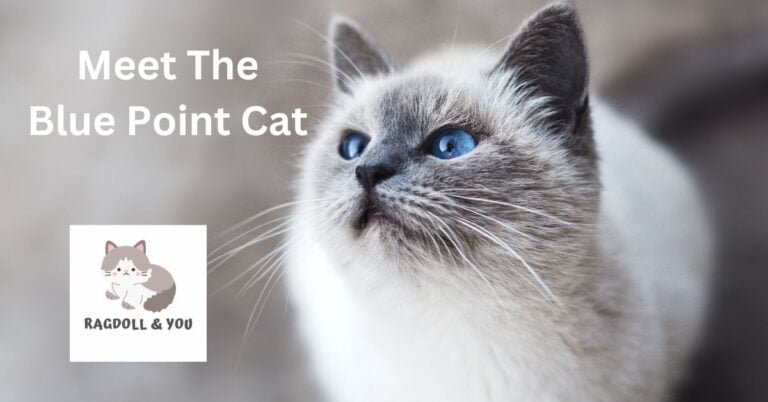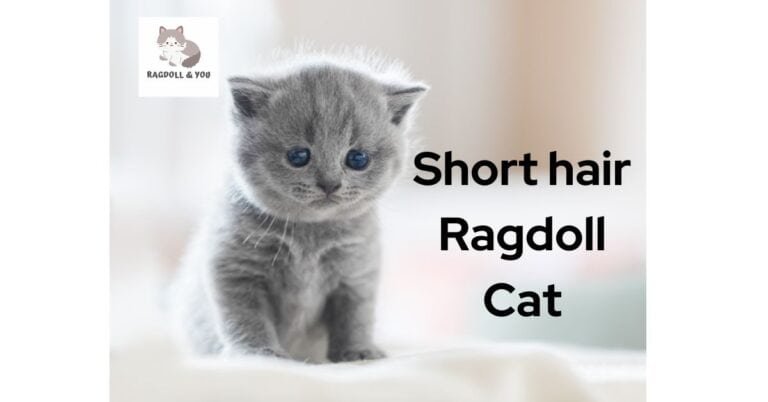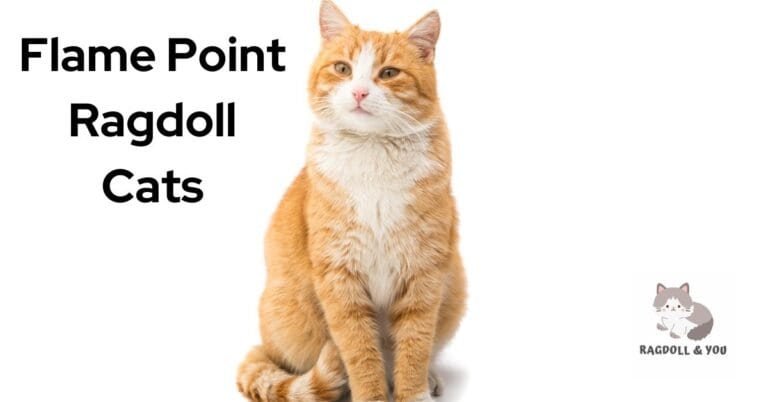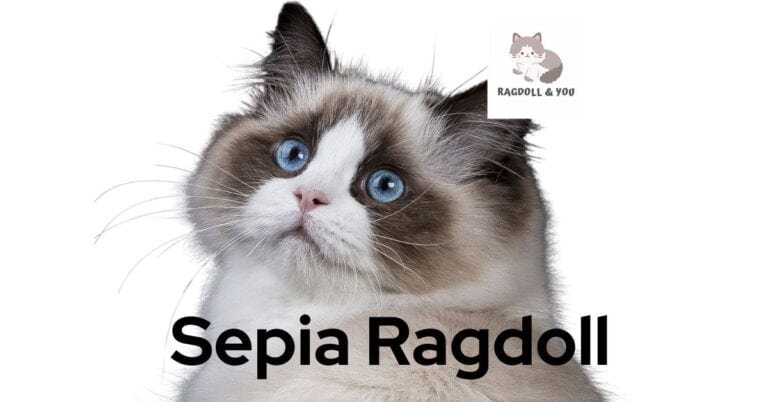Are Ragdoll Cats Hypoallergenic? Is It Safe For Owners?
Ragdoll cats are often described as being hypoallergenic, but this is not entirely accurate. While they shed less than some other cat breeds and do not have an undercoat, they still produce the Fel d 1 protein, the main allergen in cat saliva and dander.
This means that it is still possible for people with allergies to experience allergic reactions to Ragdoll cats, although the reactions may be milder than with other breeds. Our comprehensive guide will delve deep into this subject and dispel myths about Ragdolls’ impacts on allergy sufferers.
Hypoallergenic Cats Master Overview
Hypoallergenic cats are a safe choice for people who have cat allergies. They make less of the stuff that can make you sneeze and itch. This stuff is called Fel d 1 protein, found in a cat’s saliva, urine, and sebaceous glands.
Hypoallergenic cats don’t miss out on anything, though. They are just like other cats; they don’t cause allergic reactions as often!
There is no such thing as an allergy-free cat but some types may cause fewer symptoms than others. It depends on how much Fel d 1 protein the cat makes.
Female and neutered male cats often produce less of this allergen-causing protein than others! So picking this type of hypoallergenic cats might be better for folks with allergies!

An Overview of Ragdoll Cats
Ragdoll cats are a popular breed known for their beautiful, docile nature. They have striking blue eyes and silky, semi-long fur in various colors and patterns.
While many people adore Ragdolls, there is often confusion about whether they are hypoallergenic or not.
Physical Characteristics
Ragdoll cats are big and beautiful. They can weigh up to 20 pounds! Their soft fur is like a rabbit’s coat. It feels silky and does not mat easily. These cats come in blue, seal, chocolate, and lilac colors.
These felines do not have an undercoat though they shed less than other breeds. Two times a year, Ragdolls change their coats in seasonal blowouts.
The length of their hair varies on different parts of the body as well; it is short on the face but grows longer towards the belly area, where it forms a frill around the neck.
Temperament
Ragdoll cats are full of love. They like to sit and play with their family members. These cats do not need lots of exercise. They stay calm most of the time. This makes them easy pets for a busy home.

Unpacking the Myth: Are Ragdoll Cats Hypoallergenic?
Ragdoll Dander and Saliva Levels
Ragdoll cats have minimal dander and saliva levels compared to other breeds. This means they produce fewer allergens that can trigger allergic reactions in humans.
However, it’s important to note that Ragdolls still produce the Fel D1 protein, a common cat allergy allergen.
So while Ragdolls may be better suited for people with allergies than other cats, it’s inaccurate to say that they are completely hypoallergenic.
Regular grooming and cleaning can further reduce dander and saliva levels in Ragdoll cats, making them a potentially more allergy-friendly choice for individuals sensitive to cat allergens.
Grooming and Coat Maintenance
Regular grooming and coat maintenance are important for managing allergies with Ragdoll cats. Here are some tips to keep in mind:
- Brush your Ragdoll cat regularly to remove loose hairs and dander that can trigger allergies.
- Use a high-quality brush or comb designed for long-haired cats to remove shedding fur effectively.
- Consider using a grooming glove or mitt to remove loose hairs while petting your cat gently.
- Trim your cat’s nails regularly to prevent scratching and reduce the spread of allergens.
- Clean your cat’s ears regularly using a veterinarian-recommended ear-cleaning solution.
- Bathe your Ragdoll cat occasionally, following proper guidelines and using hypoallergenic shampoo specifically made for cats.
- Keep your cat’s living area clean by vacuuming regularly and using a vacuum cleaner with HEPA filters to capture allergens.
- Use allergy-friendly bedding for your cat, such as washable blankets or hypoallergenic pet beds.
- Consider minimizing carpeted areas in your home, as they can trap allergens more easily than hardwood or tile floors.
- Keep up with routine veterinary care to ensure your Ragdoll cat stays healthy and minimize the risk of allergies.

Factors Triggering Cat Allergies
Cat allergies can be triggered by shedding and specific allergenic proteins found in a cat’s dander, saliva, and urine.
Shedding and Coat Characteristics of Ragdoll Cats
Ragdoll cats have short to medium-length coats, which means they shed less than other breeds. They don’t have an undercoat, so their shedding is minimal.
However, during seasonal blowouts and twice a year, you may find their fur all over the house when they change their coats.
Ragdolls produce dander and other allergens that can be released into the air when they shed. Regular grooming, such as brushing, helps reduce allergies by removing loose hairs and dander.
Allergenic Proteins in Cats
Allergenic proteins in cats, like Fel d 1 and Fel d 4, are found in cat saliva and sebaceous glands. These proteins are the main culprits behind causing allergies in humans.
Unfortunately, Ragdoll cats also produce the Fel D1 protein, which can trigger allergic reactions in sensitive individuals.
However, it’s worth noting that female and neutered male Ragdolls may produce less of this protein compared to intact males.
The severity of allergies to Ragdoll cats can vary from person to person due to individual sensitivities.

Symptoms of Cat Allergies
Cat allergies can cause several symptoms, including:
- Sneezing
- Itchy and watery eyes
- Runny or stuffy nose
- Coughing or wheezing
How to Manage Cat Allergies
If you have allergies to cats, there are some ways to manage them, and still enjoy your time with a Ragdoll cat. Here are some tips:
- Keep your home clean by vacuuming regularly to remove allergens from the carpet and furniture.
- Use allergen-proof covers on your pillows and mattresses to reduce exposure while sleeping.
- Wash your hands after petting or playing with your cat to remove allergens.
- Designate certain areas in your home as cat – free zones like bedrooms or specific rooms where you spend a lot of time.
- Consider using HEPA filters in your home to help capture allergens in the air.
- Groom your Ragdoll cat regularly, brushing their fur to reduce dander and loose hair.
- Bathe your cat occasionally using hypoallergenic shampoo, but not all cats enjoy baths.
- Use allergy medication, such as antihistamines or nasal sprays, as your doctor recommends.
- Consult an allergist for further advice on managing your allergies.

The Coat and Grooming Requirements of Ragdoll Cats
Ragdoll cats have beautiful coat that requires regular grooming. They have a single coat, which means they don’t have an undercoat like some other breeds. This makes them easier to groom compared to cats with double coats.
Ragdolls have medium to long fur that is soft and silky in texture. However, their coat does shed, especially during seasonal changes when they go through blowouts.
To keep their coat looking its best and reduce shedding levels, brushing Ragdoll cats regularly is important. This helps remove loose hair and prevents it from spreading around your home or triggering allergies.
Weekly brushing should be sufficient for most Ragdolls, but during shedding seasons, you may need to increase the frequency of brushing.
Routine grooming tasks such as nail trimming and ear cleaning are essential for maintaining your Ragdoll cat’s overall health and hygiene.
Taking good care of their coat and practicing proper grooming techniques can help minimize allergic reactions and keep your Ragdoll happy and healthy.

FAQs
Are Ragdoll Cats Suitable For People With Allergies?
Ragdoll cats are not suitable for people with allergies. They can trigger allergic reactions in individuals who are sensitive to cat allergens.
Ragdolls have medium to high shedding levels, releasing much fur and dander into the environment. Their saliva contains allergenic proteins that can cause allergies in susceptible individuals.
So, if you have allergies, it’s best to consider other cat breeds or explore hypoallergenic options instead of getting a Ragdoll.
Do Ragdoll Cats Shed A Lot?
Ragdoll cats do not shed a lot compared to other breeds because they lack an undercoat. This means they have less loose hair to leave around the house or on your clothes. However, it’s important to note that all cats shed to some extent.
Regular grooming, such as brushing their fur, can help reduce shedding and prevent matting or tangles in their long coat. So while Ragdolls may not shed excessively, it’s still necessary to maintain their coat through regular grooming practices.
Why Are Some People Not Allergic To Ragdoll Cats?
Some people may not be allergic to Ragdoll cats because everyone’s immune system is different. While some individuals may have allergies triggered by cat dander and saliva proteins, others may have a lower sensitivity or no reaction.
While Ragdolls produce less allergenic proteins than other breeds, they can still cause allergies in susceptible individuals due to their medium levels of saliva exposure.
What Cat Is The Most Hypoallergenic?
While no cat breed is completely hypoallergenic, some breeds are known to be more suitable for people with allergies. The Siberian cat is often considered one of the most hypoallergenic cat breeds due to its low levels of allergenic proteins, such as Fel d 1.
Other potentially hypoallergenic breeds include the Sphynx, Oriental Shorthair, and British Shorthair.
However, individual reactions may vary, so it’s always best to spend time with a specific cat before bringing them into your home if you have allergies.
Are Ragdoll Cats Hypoallergenic Traits?
Ragdoll cats are not hypoallergenic, which can still cause allergies in sensitive individuals. They produce allergenic proteins that can trigger allergic reactions. These proteins are found in the cat’s saliva and sebaceous glands.
Even though Ragdolls have shorter to medium-length coat that sheds less than other breeds, this does not make them hypoallergenic.
Each person may react differently to allergens, so spending time with a Ragdoll cat before deciding if you can tolerate any potential allergic reactions is essential.
Is Ragdoll Cat High Maintenance?
Ragdoll cats are not considered high maintenance. While they have semi-long fur that requires regular grooming to prevent matting, their coat doesn’t require as much attention as other long-haired breeds.
Ragdolls are relaxed and docile, making them easy to handle during grooming sessions. Also, they don’t shed excessively like some other cat breeds, which can reduce the amount of fur cleanup needed in your home.
Proper care and attention allow Ragdoll cats to be easily managed without extensive maintenance requirements.
What Is The Lifespan Of A Ragdoll Cat?
The lifespan of a Ragdoll cat is typically 12 to 16 years. With proper care and a healthy lifestyle, they can live up to 16 years. However, it’s important to note that genetics, diet, and overall health can influence their lifespan.
Due to their larger size and potential health issues, Ragdolls may have a shorter lifespan than other breeds. So if you’re considering getting a Ragdoll cat as a pet, provide them with the necessary care and attention to help them live a long and happy life.
Is Ragdoll The Prettiest Cat?
Ragdoll cats are often considered one of the prettiest cat breeds because of their unique appearance. They catch attention with large expressive eyes, a sweet expression, and soft fur in various colors.
Their medium to large size adds to their beauty, making them attractive. Whether or not you find them the prettiest is subjective, but it’s hard to deny their charm!
Do Ragdolls Sleep With You?
Ragdoll cats are known for being very affectionate and enjoy spending time with their owners. While every cat is different, many Ragdolls like to sleep with their owners. They love snuggling up on the bed or sitting beside you on the couch.
It’s important to create a comfortable sleeping space for your Ragdoll, such as providing a cozy bed or blanket where they can feel safe and secure.
Remember, each cat has its preferences for sleeping, so be patient and let your Ragdoll decide where they feel most comfortable snoozing!







